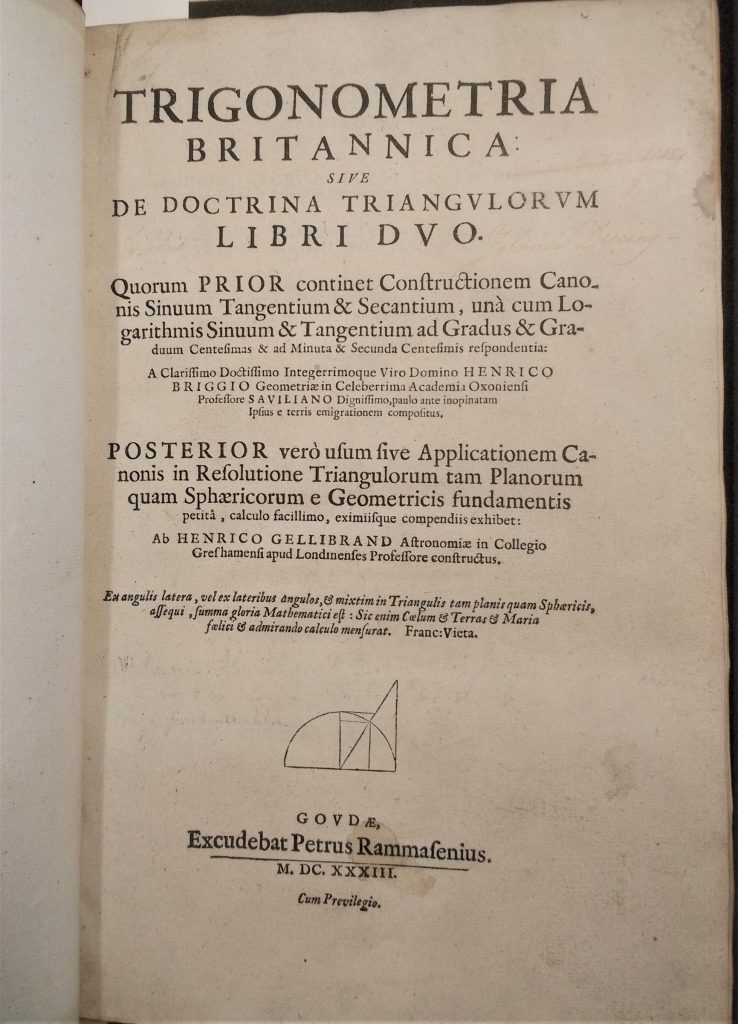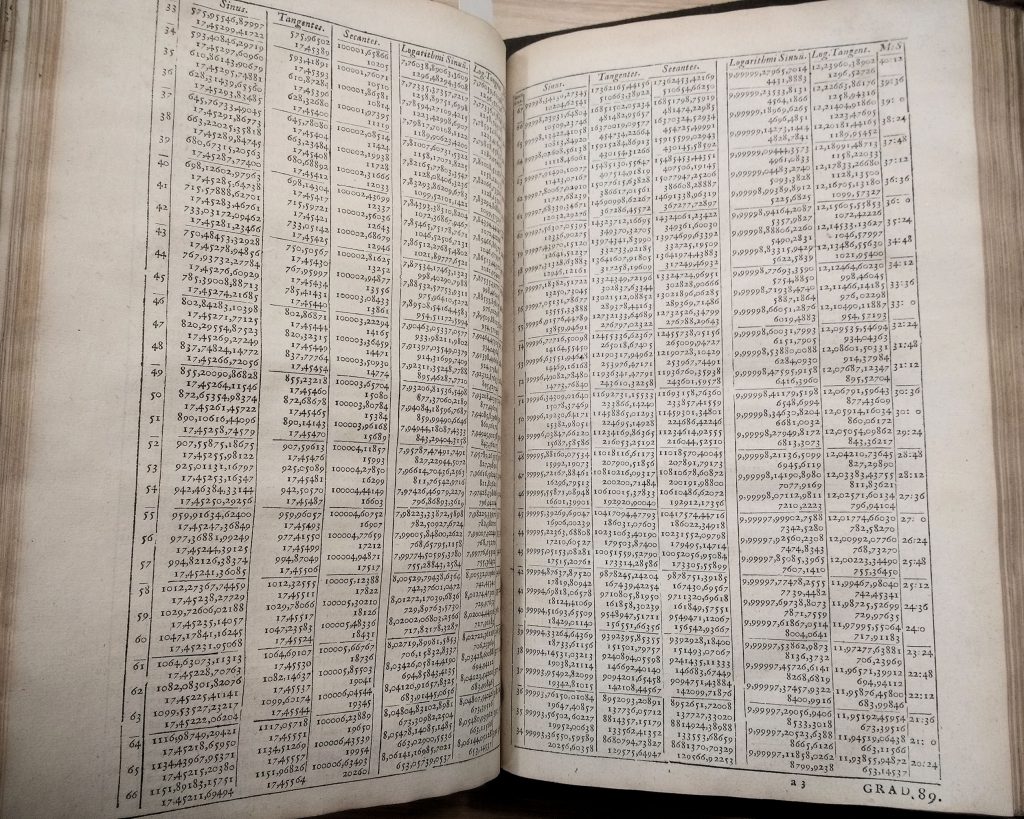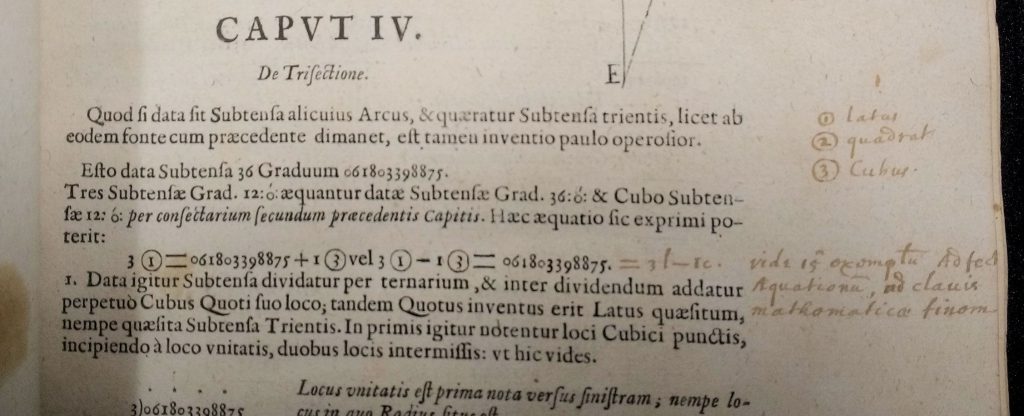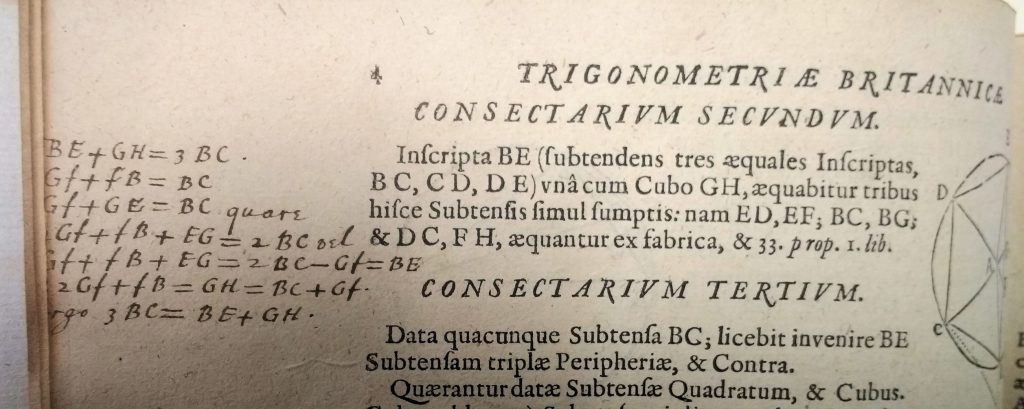This is the second in a series of posts by 2nd year History student Eddie Meehan. Eddie is working on The Grace Library of the Department of Applied Mathematics, a collection of 17th to 19th century mathematics texts, centred around the collections of Walter and Alicia Stott and Duncan C Fraser, and named after Samuel Forster Grace. The collection is rooted firmly in the city and University of Liverpool, and particularly in the Liverpool Mathematics Society and the Worshipful Company of Actuaries.

Another interesting item I came across in the Grace Library collection was the Trigonometrica Britannica, written by Henry Briggs (1561-1631) and published posthumously in 1633. The volume is notably rare, and is a table of trigonometric values that is noted for its high accuracy. Briggs prepared the tables while he was a professor of geometry at Oxford University, assisted by Gellibrand (1597-1637) who was a professor at Gresham College, London, and it was published in Gouda – at the time part of the Dutch Republic rebelling against Spanish rule.
Tables of logarithms were vital to mathematics prior to calculators, particularly for work on navigation, which Briggs was particularly interested in and spent much of his time working on. In navigation, multiplication of many digit numbers was necessary, which could be performed by the addition of their logarithms. Thus, Briggs worked to compile the first ever table of base 10 logarithms. This simplified laborious calculations for astronomers and navigators at the time, while also proving very significant for more modern mathematics (although Briggs did not have any understanding of powers as we know them today).

The work’s importance to navigation was particularly significant as Briggs also worked with the Virginia Company, who were a joint stock company created by King James I to create colonies in America. The improvement to navigation allowed greater European expansion into the Americas and also further European navigation of the ‘South Sea’, now known as the South Pacific. The work was also significant for astronomy, as prior to its publication many astronomers had feared that the difficulty of accurate calculations of logarithms would make many astronomical discoveries far more difficult.
The copy in the university library is an original Gouda publication, inscribed by what appears to be a ‘Johannus Derning’ and with notes throughout. The book was given to the university in memory of Samuel Forster Grace according to its university bookplate. He was one of the most brilliant mathematicians at Liverpool in the early 20th century and was known for his work on tidal theory, but sadly died in 1937 at just 43 as a result of wounds suffered in World War I.

